- Back to Home »
- Architectural DESIGN »
- The Art of Architecture!
Posted by : Anand
July 4, 2013
Towers that seem alive, twisting and
dancing with each other. An alien-like blob that looks like a UFO after
dark. A building that’s literally a blur. All of these and more are
homes,hotels,
museums and cathedrals around the world created without any sense of
restraint or desire to fit in. To say these bizarre buildings are
unconventional would be putting it mildly – they’re almost too strange
to be real.
The Tianzi Hotel, China
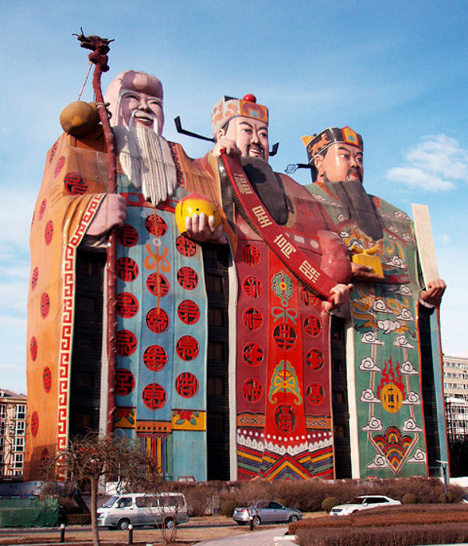
(image via: damn cool pics)
Could this be the weirdest-looking hotel in the world? Ten stories tall, the Tianzi Hotel in Hebei Province,
China holds the world record for the world’s “biggest image building”.
The three figures that make up its hulking shape are Fu Lu Shou – good
fortune, prosperity and longevity.
Nautilus House, Mexico

(image via: dvice)
Fanciful and strange, the shell-shaped
Nautilus House in Mexico City hardly looks like a home. But even though
the inside is just as unconventional as the outside – with carpets of
plants, stone walkways and entirely curvilinear surfaces – a couple and
their young children actually live there.
Atomium, Belgium
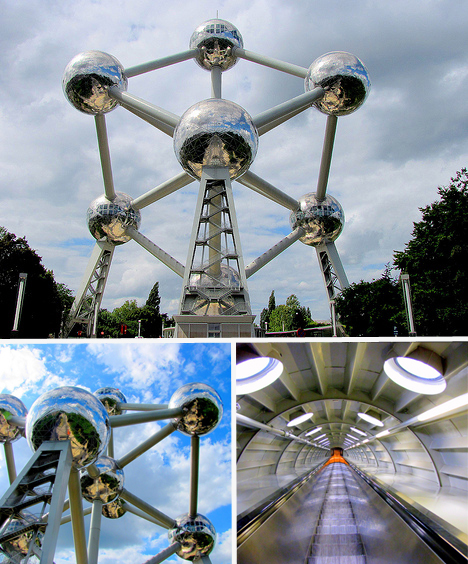
(images via: o palsson)
The aptly named Atomium building consists
of nine interconnected steel spheres that together form the atomic
crystal structure of iron (magnified 165 million times, natch). Designed
for the 1958 World Fair in Brussels, this 335-foot-tall wonder contains exhibition spaces, a restaurant and a dormitory for visiting schoolchildren with escalators connecting the spheres.
Cathedral of Brasilia, Brazil
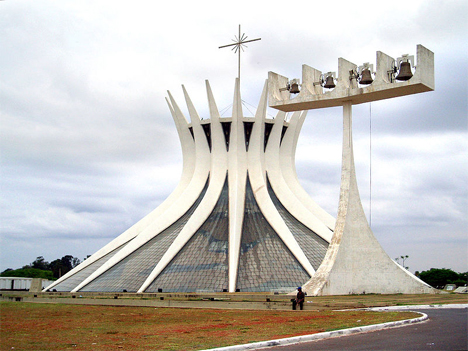
(image via: wikimedia commons)
From the outside, this bizarre building
hardly looks like a cathedral – but that’s exactly what it is, and once
you step inside the beautiful and colorful stained glass affirms its
identity. The Cathedral of Brasilia is made up of 16 curving concrete
columns with glass in between them, and a glass ceiling.
Errante Guest House, Chile
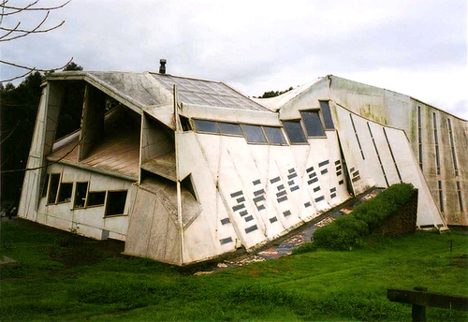
(image via: beauty addict)
The word ‘unusual’ doesn’t quite cut it
when describing this extremely odd building, which hardly looks
habitable with its sloping surfaces. Details on this structure are
fuzzy, but it’s certainly an eye-catcher.
Kunsthaus, Austria
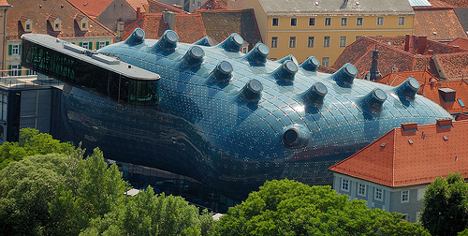
(image via: annia 316)
Called the “Friendly Alien” by its creators, Peter Cook and Colin Fournier, the Kunsthaus Graz is an art museum in Graz, Austria built in 2003 for the European Capital of
Culture celebrations. The blob-like structure definitely deviates from
the typical minimalist style of modern art museums and at night, when
it’s lit up, it looks unlike anything else in the world.
Blur Building, Switzerland
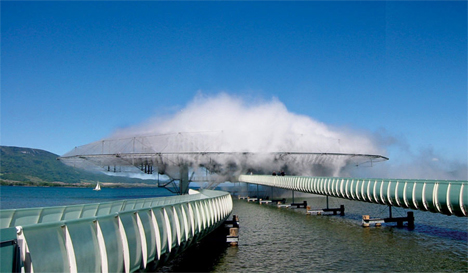
(image via: diller & scofidio)
From afar, it looks like little more than a
strangely earthbound cloud. But get a little closer and you realize
that it’s actually a building shrouded in man-made fog. The Blur
Building in Switzerland is a suspended platform that sprays tiny drops
of lake water into the air from 31,400 jets, creating the mist effect.
The building was created for the sixth annual Swiss National Exhibition
and can host up to 400 visitors at a time.
Tenerife Concert Hall, Spain
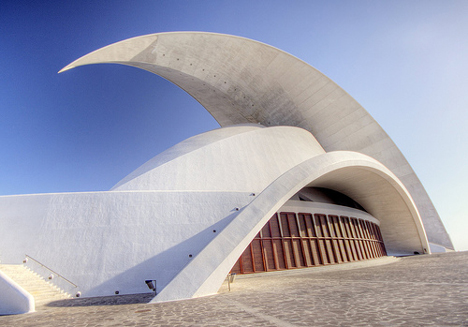
(image via: extra noise)
Who else but Santiago Calatrava could have created this sculptural work of art,
the Tenerife Concert Hall in the Canary Islands of Spain? The dramatic
curve of its sweeping roof gives it an entirely unique silhouette,
especially when viewed from the side. Made from concrete, the auditorium
connects the city of Tenerife with the ocean.
Kettle House, Texas

(image via: bizarre records)
Made of steel sometime in the 1950s, the ‘Kettle House’ in Texas has attracted many a curious tourist. The unusual choice in materials and shape was probably influenced by the owner’s previous occupation – building storage tanks for oil companies.
Casa Batllo, Spain
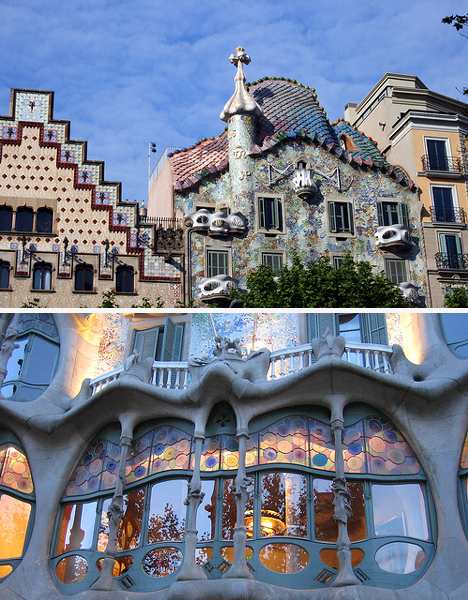
(images via: bert k, laurea)
One of Barcelona’s treasured buildings designed by the famed Antoni Gaudi, Casa Batllo
is known locally as the ‘House of Bones’ for its flowing, skeletal
stonework. With small balconies that resemble the faces of lizards and
an exterior texture reminiscent of scales, perhaps it could more
accurately be called reptilian.
Olympic Stadium, Quebec
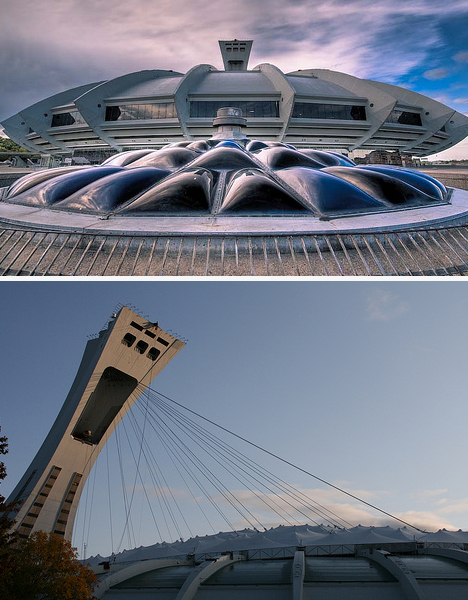
(images via: nicholas nova, rene erhardt)
Built for the 1976 Summer Olympics, the
Olympic Stadium in Montreal is now used as a stadium for the city’s
professional baseball and football teams. Its centerpiece is the
Pisa-like leaning tower, the tallest inclined tower in the world at
nearly 575 feet.
Guggenheim Museum, Spain
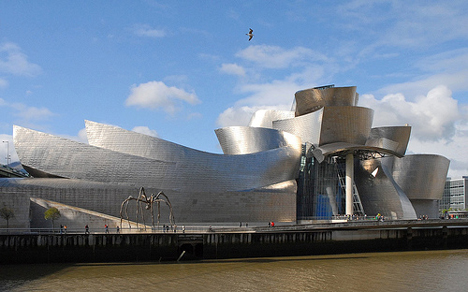
(image via: dalbera)
Considered one of architect Frank Gehry’s greatest works, the Guggenheim Museum in Bilbao, Spain
is a mass of random curves made from titanium, which resemble fish
scales. Gehry says “the randomness of the curves are designed to catch
the light”, and that they do, with a brilliant shimmer that reflects the
sparkling water of the Nervion River.
Kansas City Library, Missouri
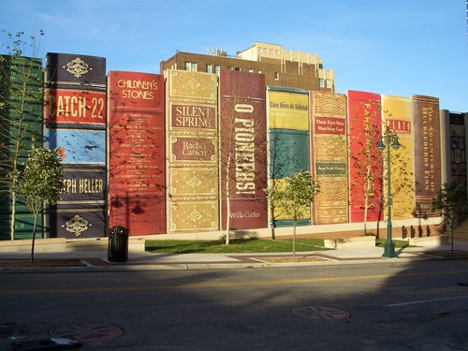
(image via: marnox1)
What could be more appropriate for a
library design than making it look like books on a shelf? The Kansas
City Library in Missouri features a façade of book spines, including
Tolkein’s Lord of the Rings and Shakespeare’s Romeo and Juliet, that
fence in the parking areas which sandwich the historic building.
Federation Square, Australia
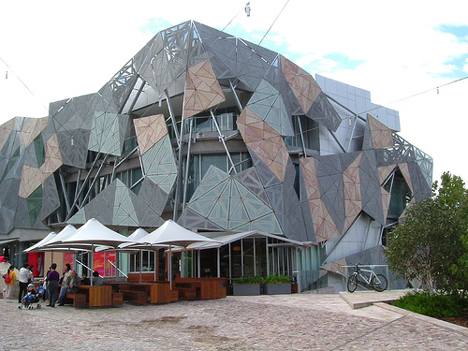
(image via: rob young)
Taking up an entire city block, Federation Square is an imposing collection of architecture,
but there’s more than enough whimsy to balance out its sheer size.
Reminiscent of Gehry’s Guggenheim Bilbao – albeit far more geometric –
this building’s design was the winner of an international competition to
create a new civic precinct in the center of Melbourne, Australia.
Dancing Building, Prague
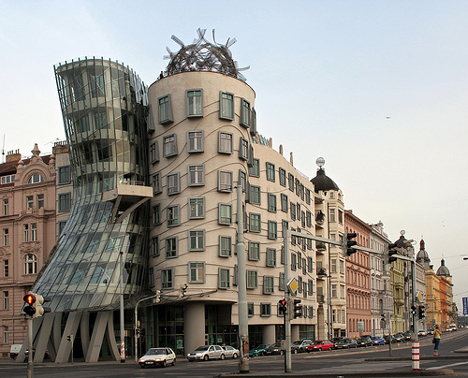
(image via: ahisgett)
Hmm, what super-famous architect could have
been involved in this building? That’s right, Frank Gehry had a hand in
the design of the Nationale-Nederlanden building
in downtown Prague, Czech Republic, which was co-designed by Vlado
Miluni?. The building’s two main structures resemble a pair of dancers,
hence its nickname – but it’s also known as ‘Drunk House’.
Cubic Houses, Netherlands
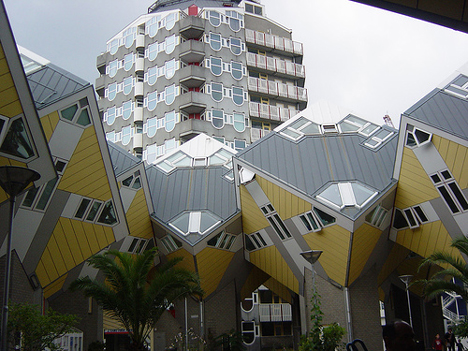
(image via: darksidex)
After many Rotterdam buildings were destroyed in WWII, architects had a bit of fun redesigning many areas in new, modern and sometimes surprising styles. The Cubic Houses
are one example, designed in the 1980s by architect Blom. They’re
basically standard houses turned on a 45 degree angle, each resting on a
hexagonal pylon. The cubes are so fascinating that one owner decided to
buy and manage a “show cube” to keep tourists from disturbing the rest
of the residents.













Post a Comment